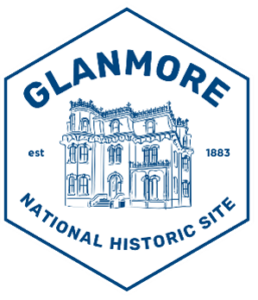The 1958/59 Belleville McFarlands World Champion Hockey Team
BELLEVILLE – The City of Belleville’s Glanmore National Historic Site, part of the Community Services Department, is celebrating Belleville’s hockey heritage with a special presentation on Feb. 21 about the history of hockey in Belleville and the story of the Belleville McFarlands hockey team.
About the presentation:
In the 1950s, Belleville’s Memorial Arena was packed on game nights as rowdy crowds cheered on their hometown hockey team, the Belleville McFarlands (MACS). Owned by wealthy industrialist H.J. McFarland of Picton, the team was stocked with former NHL veterans, promising rookies and local “farm boys” who played a blend of hockey featuring speed, scoring skill and bruising play.
The mighty MACS were rough, tough and unstoppable.
In 1958, the McFarlands swept through successive series with Canadian teams to win the Allan Cup. Over 50,000 fans lined the streets of Belleville to welcome them home. The following year, they travelled to Prague, Czechoslovakia to play the best teams in the world. The MACS lost just one game and captured the world title, and Belleville went crazy again.
But within months the players were embroiled in a scandal involving payments to team members. It was not until 50 years later in April 2009 when Belleville honoured the team with a special anniversary night, launching a documentary and book about their remarkable achievement.
Re-live this moment of hockey history on Friday, Feb. 21 from 2 to 4 p.m. in the Multi-Purpose Room of the Quinte Sports and Wellness Centre (265 Cannifton Rd.). The event will feature a discussion with author Richard Hughes about his new book, “Belleville Hockey Town, The Early Years 1865 – 1930”, as well as a screening of a documentary about the McFarlands hockey team and a presentation from Picton journalist Peter Lockyer.
The Celebrating Hockey History event is brought to you by Glanmore National Historic Site in partnership with History Lives Here. Tickets are $20/person which includes light refreshments and a complimentary pass to Glanmore for a future visit to the museum. To reserve tickets, visit Glanmore.ca or call 613-962-2329 for more information.
Media Contact:
Jenna Leslie
Communications Coordinator
City of Belleville
613-967-3200 ext. 3261
jleslie@belleville.ca

















 The Murray Canal, built between 1882 – 1889, provided an alternative shipping route around the treacherous shoals of Prince Edward County in the great days of sail and steam. And after nearly a decade of heated community debate, Prince Edward County’s own railway line was completed in 1879 with the tracks ending at what is now Lake Street on the western edge of downtown Picton.
The Murray Canal, built between 1882 – 1889, provided an alternative shipping route around the treacherous shoals of Prince Edward County in the great days of sail and steam. And after nearly a decade of heated community debate, Prince Edward County’s own railway line was completed in 1879 with the tracks ending at what is now Lake Street on the western edge of downtown Picton. Friday and Saturday nights brought farmers to town to buy their groceries and other supplies, and to spend their hard-earned dollars on a rare luxury like a dinner at The Royal. The insatiable demand for food during two world wars brought boom times, which offset the ten lost years of the Great Depression. The construction of Camp Picton, a Commonwealth air training facility built in 1939, swelled the town’s population with a substantive military presence. These were the great days of The Royal as the hotel hosted dinners and dances, military balls, birthdays, weddings and anniversaries, election nights, and served as a meeting space for service clubs, warden’s banquets, and other community events.
Friday and Saturday nights brought farmers to town to buy their groceries and other supplies, and to spend their hard-earned dollars on a rare luxury like a dinner at The Royal. The insatiable demand for food during two world wars brought boom times, which offset the ten lost years of the Great Depression. The construction of Camp Picton, a Commonwealth air training facility built in 1939, swelled the town’s population with a substantive military presence. These were the great days of The Royal as the hotel hosted dinners and dances, military balls, birthdays, weddings and anniversaries, election nights, and served as a meeting space for service clubs, warden’s banquets, and other community events.
